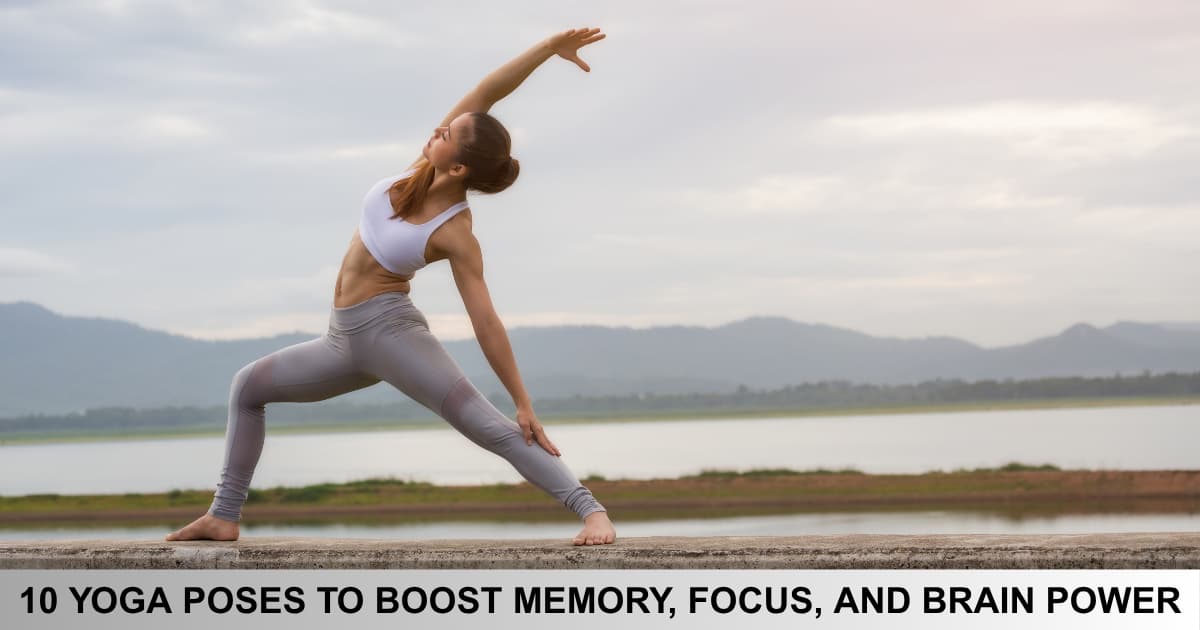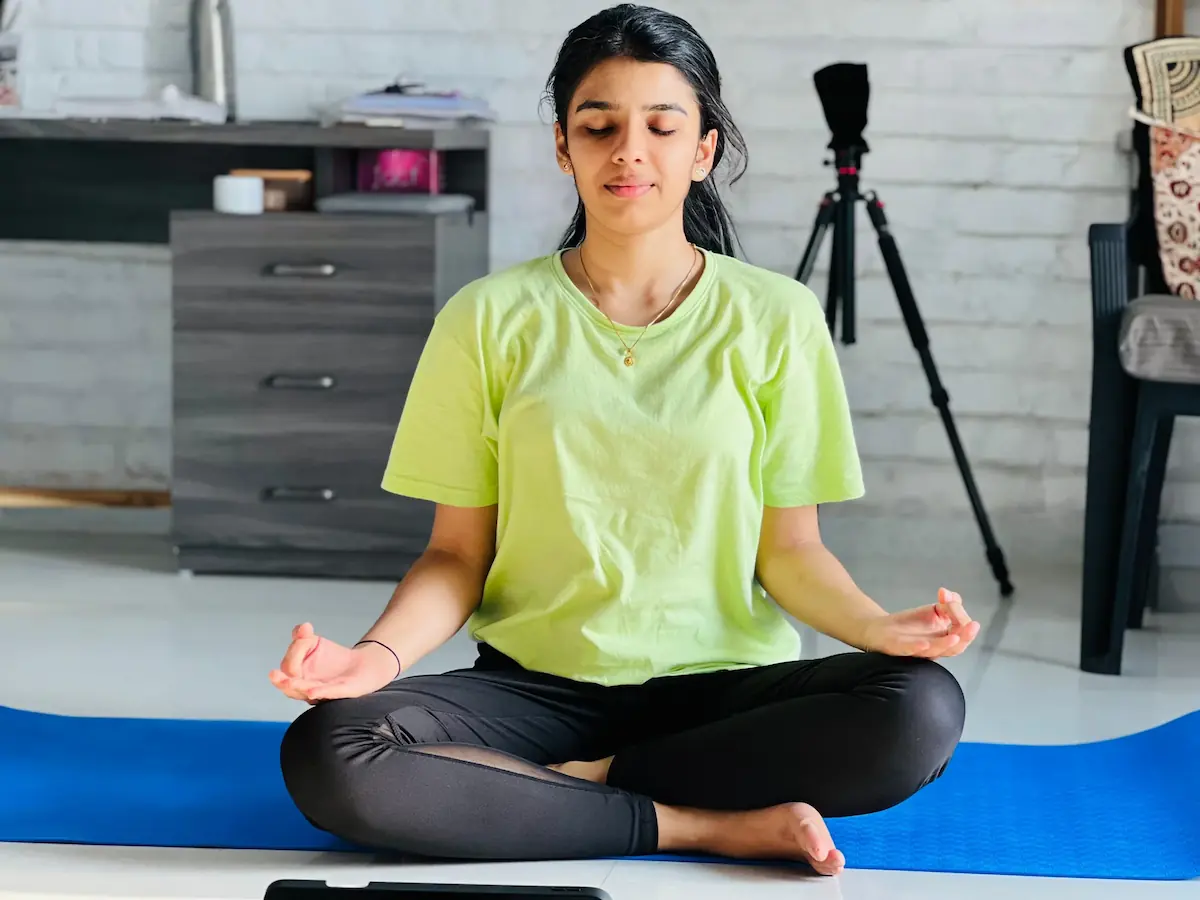In today’s fast-paced, digitally-driven world, mental clarity, strong memory, and sharp focus have become crucial. Whether you’re a student, a working professional, or someone simply looking to stay mentally agile with age, yoga offers a natural and holistic way to boost your brain power.
Practicing yoga at home doesn’t require fancy equipment just a quiet space, a mat, and a few minutes a day. By combining breathwork, movement, and stillness, these poses stimulate blood flow to the brain, reduce stress, and enhance cognitive function.
Let’s explore 10 beginner-friendly yoga poses you can do to improve your brain health naturally.
Padmasana (Lotus Pose)

A classic meditation posture that anchors your awareness inward.
How to do it:
- Sit cross-legged with each foot resting on the opposite thigh.
- Keep your spine tall, shoulders relaxed.
- Close your eyes and breathe slowly for 3–5 minutes.
Benefits:
- Calms the nervous system
- Sharpens focus and memory
Tips: If full lotus is difficult, start with Sukhasana (Easy Pose).
Bhramari Pranayama (Bee Breathing)
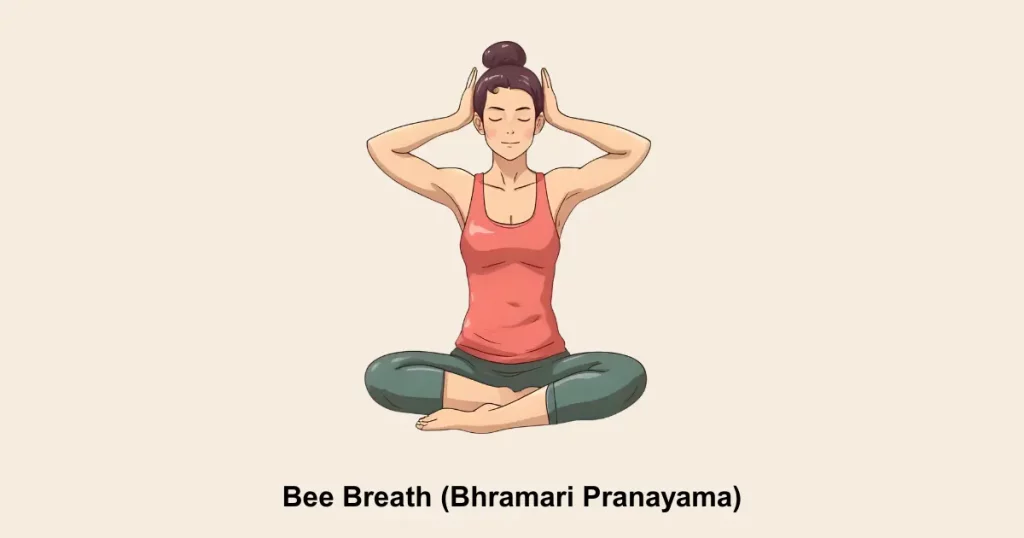
A soothing breathing technique that quiets the mind.
How to do it:
- Sit comfortably, close your eyes.
- Close your ears gently with your thumbs.
- Inhale deeply, and while exhaling, make a humming “mmm” sound.
- Repeat for 3–5 rounds.
Benefits:
- Improves concentration and sleep quality
- Reduces mental fatigue
Precautions: Avoid if you have ear infections or dizziness.
Sarvangasana (Shoulder Stand)

An inversion that increases blood flow to the brain.
How to do it:
- Lie on your back, lift your legs, hips, and back off the ground.
- Support your lower back with your hands.
- Hold the pose for 1–2 minutes, breathing steadily.
Benefits:
- Boosts brain oxygenation
- Balances hormones and improves mental focus
Precautions: Avoid during neck issues or menstruation.
Halasana (Plow Pose)
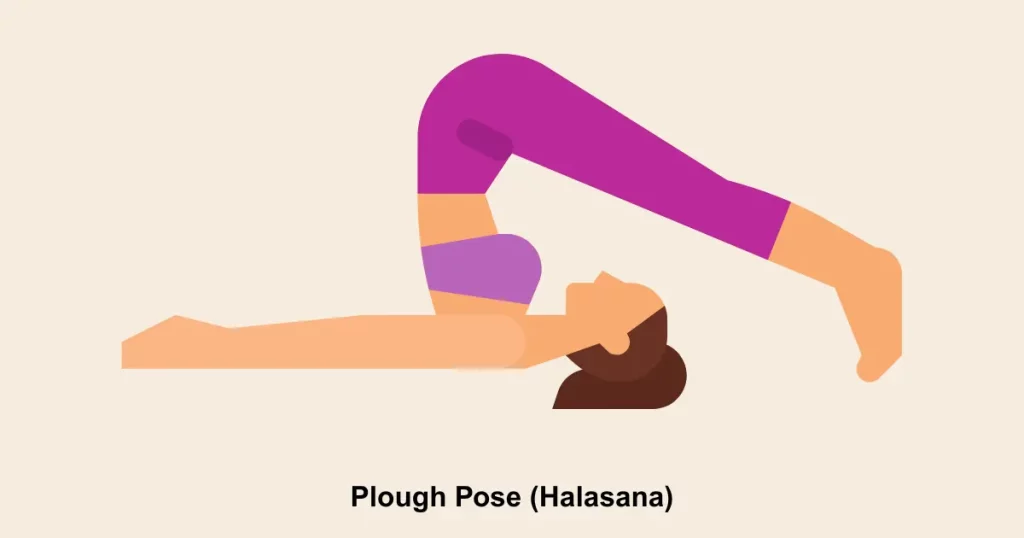
A deep stretch that stimulates the nervous system.
How to do it:
- From shoulder stand, lower your legs overhead to touch the floor.
- Keep your hands supporting your back or flat on the mat.
- Hold for up to 1 minute.
Benefits:
- Enhances brain function and reduces fatigue
- Improves sleep and mental clarity
Precautions: Avoid if you have high blood pressure or cervical pain.
Paschimottanasana (Seated Forward Bend)
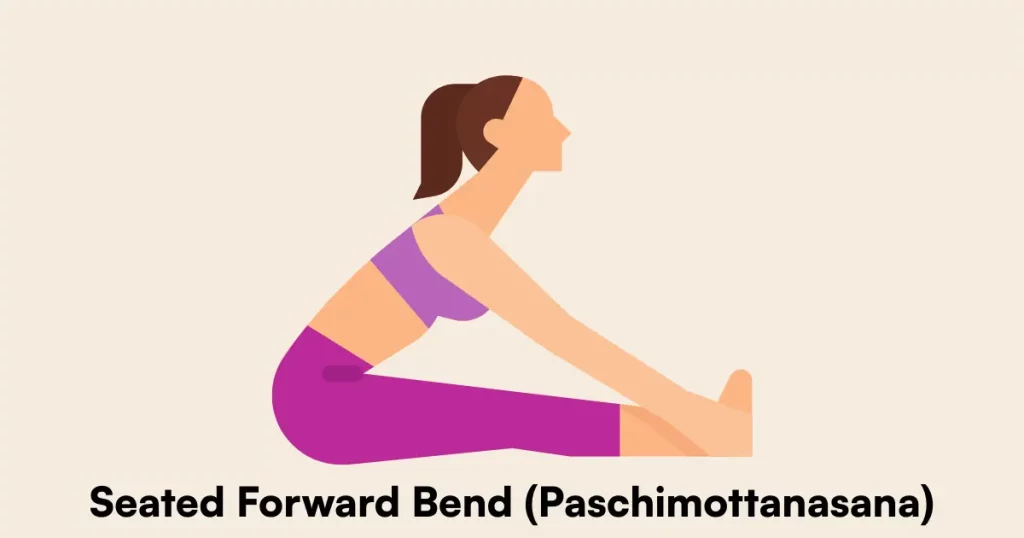
A calming forward fold for introspection and mental stillness.
How to do it:
- Sit with legs extended.
- Inhale and lengthen the spine, exhale to fold forward.
- Hold for 1–2 minutes.
Benefits:
- Enhances memory and reduces anxiety
- Stimulates brain function
Tips: Use a strap if you can’t reach your feet.
Vajrasana (Thunderbolt Pose) + Meditation
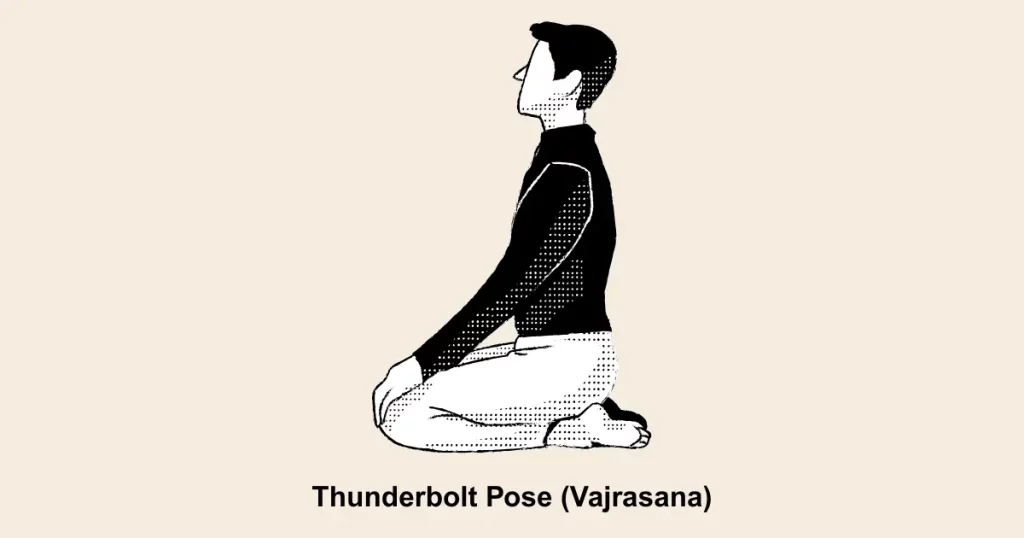
Perfect after meals for mindfulness and clarity.
How to do it:
- Kneel and sit back on your heels.
- Close your eyes and breathe deeply for 5 minutes.
Benefits:
- Improves digestion and mental sharpness
- Enhances alertness and mindfulness
Precautions: Avoid if you have knee pain—use a cushion if needed.
Nadi Shodhana (Alternate Nostril Breathing)
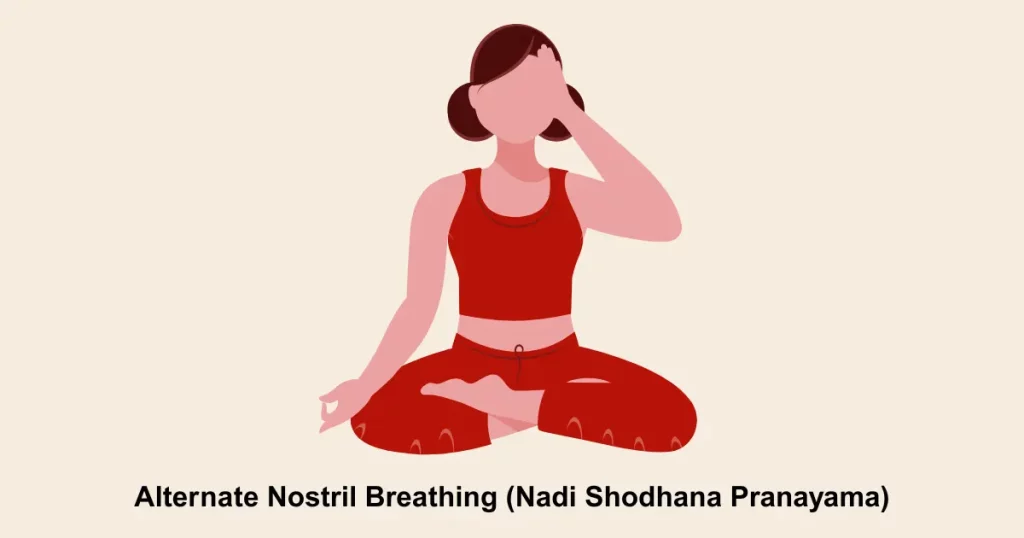
Balances left and right brain hemispheres.
How to do it:
- Sit tall, use your right thumb to close your right nostril.
- Inhale through the left nostril.
- Close left nostril, exhale through right.
- Continue alternating for 3–5 minutes.
Benefits:
- Clears mental clutter
- Boosts memory and emotional balance
Tips: Practice on an empty stomach for best results.
Balasana (Child’s Pose)

A simple resting pose to reset the mind.
How to do it:
- Kneel on the mat, sit on heels, and fold forward.
- Extend your arms forward or rest them beside your body.
- Breathe deeply for 2 minutes.
Benefits:
- Calms the brain and nervous system
- Reduces stress and overthinking
Precautions: Use a cushion if you have knee discomfort.
Ardha Matsyendrasana (Half Spinal Twist)
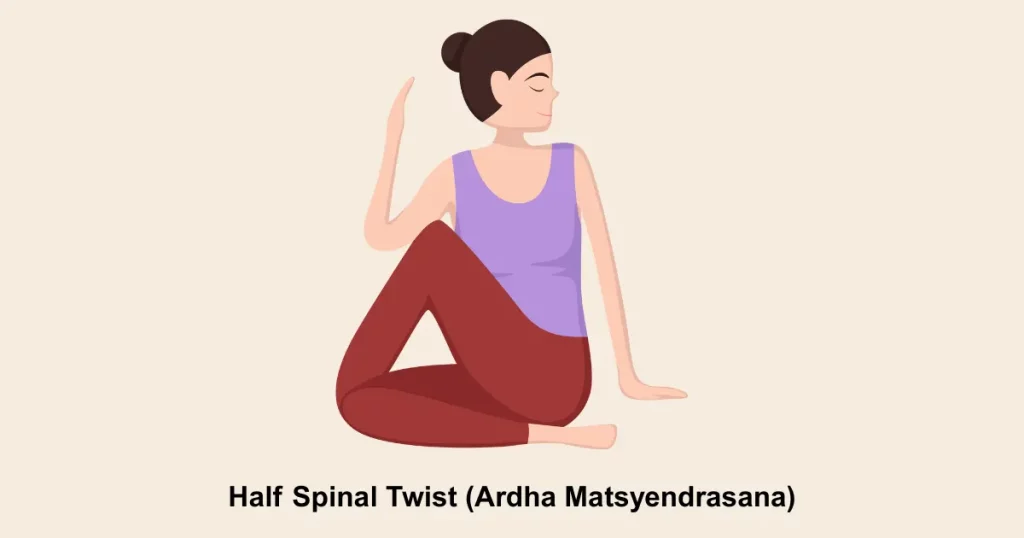
A detoxifying spinal twist that refreshes the mind.
How to do it:
- Sit with one leg bent and the other crossed over.
- Twist your torso toward the raised knee.
- Hold for 1–2 minutes each side.
Benefits:
- Stimulates brain cells and digestion
- Improves memory by increasing circulation
Tips: Keep the spine straight during the twist.
Savasana (Corpse Pose)
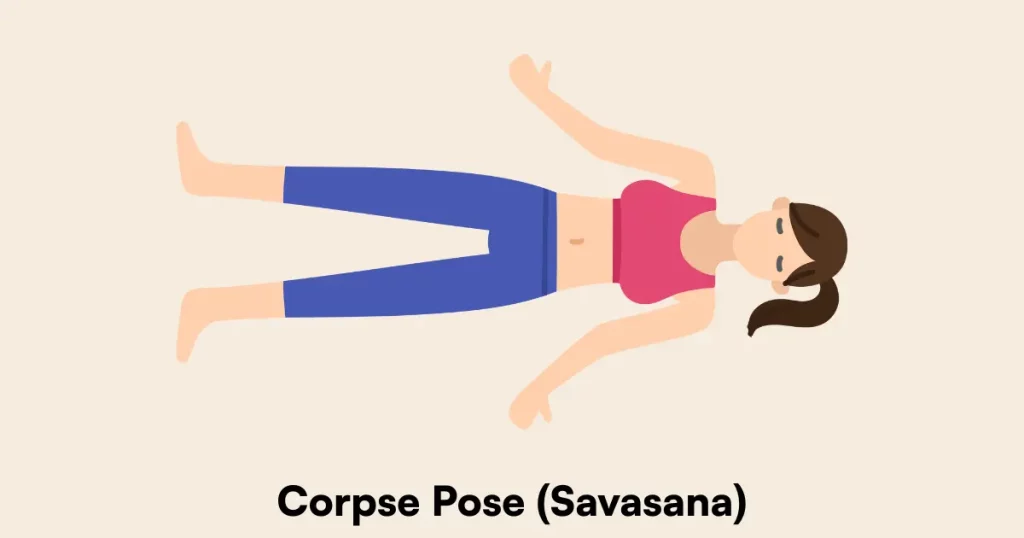
Deep relaxation for total mental reset.
How to do it:
- Lie flat on your back, arms relaxed beside you.
- Close your eyes and breathe naturally.
- Stay here for 5 minutes.
Benefits:
- Reduces mental fatigue and anxiety
- Improves mental clarity and retention
Tips: Use a pillow under your knees if your lower back feels tight.
Why Yoga Works for Brain Power
Yoga enhances brain health through:
- Improved oxygen flow
- Nervous system regulation
- Reduction in stress hormones
- Increased mindfulness and focus
By practicing these poses daily, even for just 15–20 minutes, you’ll notice a boost in memory, sharper thinking, and better emotional control.
Daily Routine Suggestion
Start with:
- Bhramari Pranayama → Padmasana → Sarvangasana
- Follow with Paschimottanasana → Vajrasana + Meditation
- End with Savasana
Total time: 20–30 minutes
Frequently Asked Questions (FAQs)
Q1. Can beginners do these poses?
Yes! All poses listed are beginner-friendly. Use props or modifications as needed.
Q2. How often should I practice?
Daily or at least 4–5 times a week for best results.
Q3. Do I need to be flexible to start?
Not at all. Yoga improves flexibility over time. Just start where you are.
Q4. Can yoga alone boost memory?
While yoga helps significantly, combining it with a healthy diet, sleep, and brain exercises maximizes results.
Q5. When is the best time to practice?
Morning or early evening, ideally on an empty stomach.
- Beginner Yoga Poses for Stress Relief
- Why Your Mind Wanders During Meditation
- Yoga vs Gym: Which is Better for Mental Health?
Final Thoughts
Start small, stay consistent, and experience the transformation within. Just a few mindful minutes a day can sharpen your memory and bring clarity to your mind. Roll out your mat and let your brain breathe!
